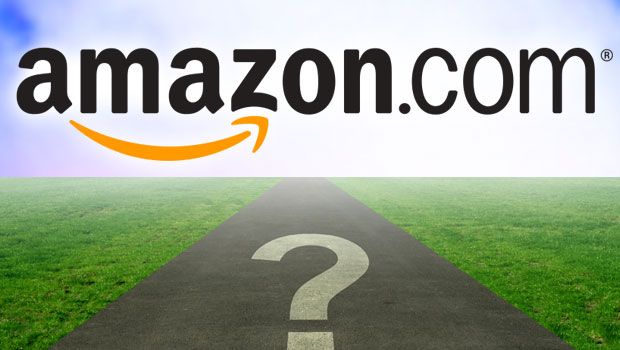Amazon has been plotting its next big move to control its ever-evolving logistics chain, with a new service called “Shipping with Amazon” in the works.
The company plans to launch the new service within weeks, The Wall Street Journal reported Friday. It initially will pick up goods from third-party sellers that already work with Amazon and deliver them to customers. The service eventually will expand to merchants that currently do not work with Amazon.
It will launch in Los Angeles and expand to other U.S. cities over time, according to the Journal.
The new service will undercut UPS and FedEx on price, according to the report, although it did not include any details about its pricing structure.
Amazon confirmed that it intends to expand into a new delivery endeavor, but the company did not provide details on the schedule or scope.
“We’re always innovating and experimenting on behalf of customers and businesses that sell and grow on Amazon to create faster low-cost delivery choices,” spokesperson Kristen Kish told the E-Commerce Times.
The move marks Amazon’s latest effort to increase its control over logistics, which have been a central focus of the company as its has grown to become the most powerful e-commerce retailer in the U.S.
Logistics Control
Amazon has relied on third-party shippers for many years, but those firms have tended to become overwhelmed and backlogged during the critical Christmas holiday delivery season.
To address the shipping challenges, Amazon has experimented with drone deliveries. It also created a service called “Deliver With Amazon,” which lets local delivery services partner with Amazon to get packages to local customers. It has expanded its network of warehouses and fulfillment centers to locate merchandise closer to customers. Amazon also acquired a fleet of freight aircraft for its Prime Air business and built a US$1.5 billion hub in Kentucky.
Amazon last week launched Prime Now, a two-hour delivery service for its Whole Foods Markets. Deliveries can include fresh produce and meats along with many other items. Prime Now debuted in Austin, Dallas, Virginia Beach and Cincinnati, and Amazon plans to expand it nationwide over the course of the year.
More than 5 billion items shipped through Amazon’s Prime membership program last year, according to the company. Two-day shipping is free to Prime members, while one-day, overnight and same-day shipping typically require a fee.
The WSJ’s suggestion that Amazon’s delivery service will compete with FedEx and UPS, indicates “a lack of basic understanding of the full scale of the global transportation industry,” said Patrick Fitzgerald, senior vice president for integrated marketing and communications at FedEx.
FedEx has a network of 650 planes, 400,000 people, tens of thousands of stores, drop boxes and ship centers, 150,000 vehicles and other facilities, he told the E-Commerce Times.
UPS will continue to support Amazon and all other valued customers, said spokesperson Glenn Zaccara. However, the company declined to comment specifically on Amazon’s latest business strategy.
For UPS, “there is tremendous opportunity in the B2C [sector] and more growth coming,” he told the E-Commerce Times, “irrespective of how other companies may shift strategies.”
UPS reported 8 percent revenue growth in 2017, very strong revenue per piece, and average annual price improvement of 2.9 percent, which was at the higher end of its 2-3 percent guidance range, Zaccara pointed out. The company’s per package volume rose by about 4.5 percent to 5.08 billion.
Holiday Crush
UPS expected to deliver 750 million packages during last year’s holiday season, it said in December — 40 million more than its year-before shipments of 712 million packages.
The record shopping that took place during last November’s Black Friday weekend created a bit of pressure on major shipping providers, leading UPS to warn of delays.
Shipping costs are some of the most important and most concerning in the e-commerce business, said Jill Dvorak, senior director of digital retail at the National Retail Federation
They can range from 10-20 percent of costs, depending on carriers, rate tables and product size, she told the E-Commerce Times.
“Amazon’s move to add delivery services for their business customers is a demonstration of how they are working to enable end-to-end, customer-centric experiences for everyone,” said Scott Webb, president of Avionos.
“B2B — and especially the supply chain — has been slow to innovate with innovative tech solutions just because they typically work with large products that are more deeply rooted in brick-and-mortar commerce,” he told the E-Commerce Times.
“They can buy planes, trains and automobiles, but until they stop shipping so much air, I don’t see Amazon improving internal shipping profitability,” said Paula Rosenblum, managing partner at RSR Research.
Amazon is starting to call third-parties “Prime” shippers. However, they often fail to come close to meeting the time frames that you see with orders fulfilled through Amazon itself, she told the E-Commerce Times. Some of those shipments can take eight days versus Amazon’s own two to three days, Rosenblum noted. Establishing its own shipping service could help Amazon reduce those discrepancies.























































Curious to know how Amazon plans to undercut both UPS and FEDEX. Obviously they are the top players of small packages in North America. We could see an unprecedented agreement between all three that will be a win-win-win situation. This could drive Amazon sales even higher (if you can imagine that even being possible!). I AM for one will paying close attention to see how this all unfolds.